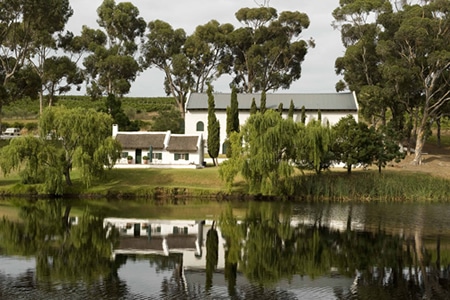Tim James: Exploring difference in Cape pinot
By Christian Eedes, 7 September 2015
One of the great –and perhaps surprising – varietal successes of the Cape wine revolution of the past few decades has been pinot noir. Surprising, because back in the bad old days when pinot was everywhere in the New World known as the “heartbreak grape” and few were convinced that Burgundian supremacy could ever be even challenged, back in 1994 there were just a few dozen Cape examples.
Few of them had any sort of reputation – Hamilton Russell and Bouchard Finlayson the notable exceptions. They were the only two Hemel en Aarde producers then, and Bouchard Finlayson made (I think) the only pinot from another region now closely associated with pinot, Elgin. Of that Oak Valley wine, John Platter wrote that it was “one of less than a handful able to rebut the charge that Cape is no-no pinot territory”. Fast forward 20 years, and no one doubts the quality of Cape pinot – even if many people still think it has quite a way to go before even the best examples will shine alongside good Burgundies, especially when they are ten or twenty years old.
But the most interesting thing that’s been happening to pinot in the last few years has come about through confidence in local terroir and a concomitant belief that the terroir is worth exploring at the same sort of vineyard and vine-parcel level that has proved so triumphant in Burgundy over the centuries. More and more winemakers are working with different vineyards and vinifying them separately, getting satisfactorily specific qualities in both structure and flavour. Of course, this is predicated not only on a determination to explore those differences, but on having the viticultural skill and winemaking sensitivity to bring them out and make them interesting to other pinot-lovers.
For difference – alongside deliciousness – is what fascinates pinot lovers. It will take a little time, of course, before we can speak more than tentatively about general terroir differences. But we’re all the time more and more enabled to learn about (and usefully accumulate) some specific differences.
What a useful and fascinating move it was when Newton Johnson decided, with their 2012 vintage to make available to geeks wines from each of the three vineyards that contribute to the Family Vineyards wine – the blend that remains, nonetheless, at the top of their hierarchy. (They have decided not to release single-vineyard wines from the difficult, low-yielding 2014 vintage.)
Peter-Allan Finlayson has built up, on a more permanent, committed basis, a portfolio of single-vineyard pinots for his Crystallum label: so far, two from different terroirs in the Hemel-en-Aarde area, and one from Elandskloof in the Overberg, as well as a blend.
And now, bringing in the note of surprise once more, Johan “Stompie” Meyer – best known for his association with the Swartland avant-garde, notably with Mount Abora – has gone pinot-crazy for his own JH Meyer label. He’s had an Elgin pinot for a few years, but from the 2014 vintage will be releasing not only that one, but two others – from Outeniqua and Elandskloof respectively. Not to mention (reminding us of his Swartland radicalism) a rather frivolous Beaujolais-style pinot made by carbonic maceration.
And there are others. The Winery of Good Hope, for example, is also building up quite a pinot collection, though the emphasis there seems to be more on different winemakers than different terroirs. The Cape pinot noir story – nearly a century after the grape was first planted at, of all places, Alto, and not much less since Muratie released the first bottled pinot – is getting ever richer and more interesting, with many chapters still to be written.
- Tim James is founder of Grape.co.za and contributes to various local and international wine publications. He is a taster (and associate editor) for Platter’s. His book Wines of South Africa – Tradition and Revolution appeared in 2013.








Comments
0 comment(s)
Please read our Comments Policy here.